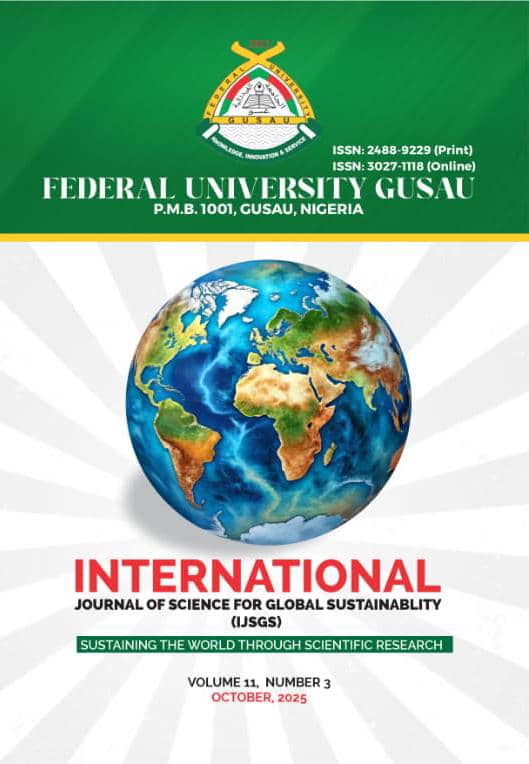Phase Transformation and Band Gap Narrowing in Mechanochemically Synthesized Nitrogen-Doped TiO₂ for use in Dye Sensitized Solar Cell
DOI:
https://doi.org/10.57233/ijsgs.v11i3.951Keywords:
Photovoltaic, nanomaterials, recombination, doping band gapAbstract
Titanium dioxide (TiO₂) is widely used as a photoanode in dye-sensitized solar cells (DSSCs), but its wide band gap (3.0–3.2 eV) restricts absorption to the ultraviolet region, limiting solar energy conversion efficiency. Nitrogen doping has been recognized as an effective strategy to extend the optical response of TiO₂ into the visible spectrum and improve charge separation. In this study, nitrogen-doped TiO₂ (N-TiO₂) nanocrystals were synthesized via a mechanochemical method using high-energy ball milling of commercial TiO₂ (P25) in ammonium hydroxide solution. Structural and surface analyses were carried out using X-ray diffraction (XRD) and X-ray photoelectron spectroscopy (XPS). XRD results revealed that the synthesized samples consisted mainly of anatase and rutile phases, with mechanical energy promoting a partial transformation of brookite to rutile. XPS confirmed the incorporation of nitrogen into the TiO₂ lattice, showing distinct Ti–N and Ti–O–N bonding states. The incorporation of nitrogen decreased the band gap and expanded the spectral response of TiO₂ into the visible-light region, while also enhancing oxygen adsorption and reducing charge recombination. These modifications are expected to improve the photocurrent density and overall photovoltaic performance of N-TiO₂ based DSSCs. The findings highlight mechanochemical synthesis as a simple and effective route for producing visible-light-active N-TiO₂ nanomaterials for next-generation solar energy applications.
Downloads
Published
How to Cite
Issue
Section
License
Copyright (c) 2025 Author(s)

This work is licensed under a Creative Commons Attribution 4.0 International License.












